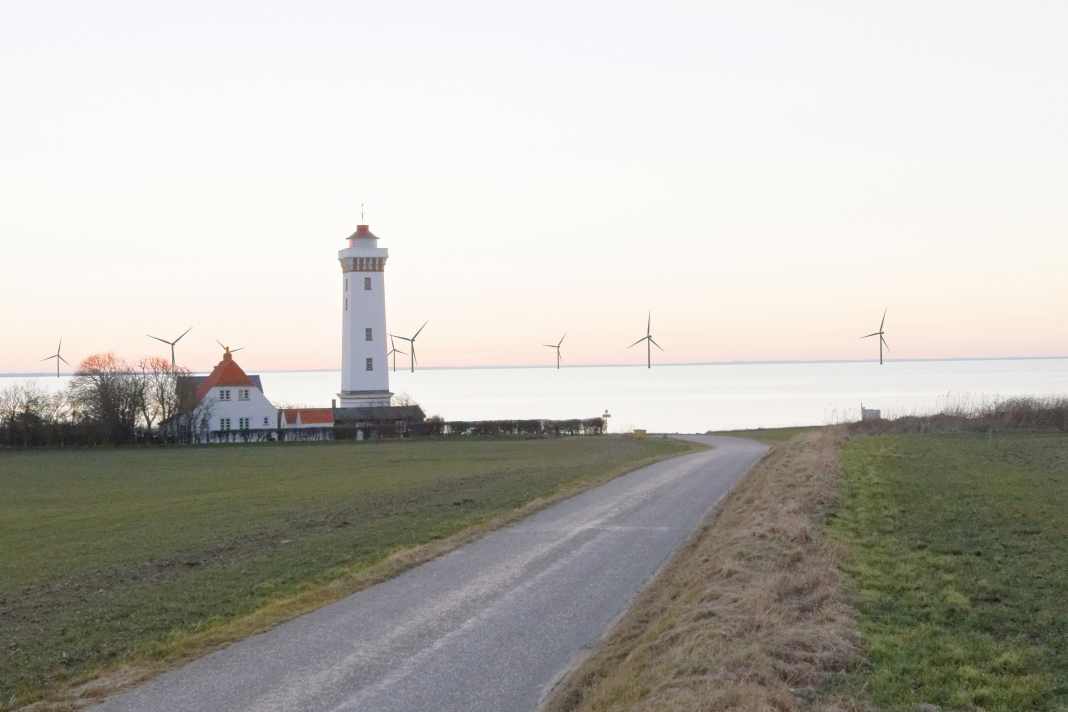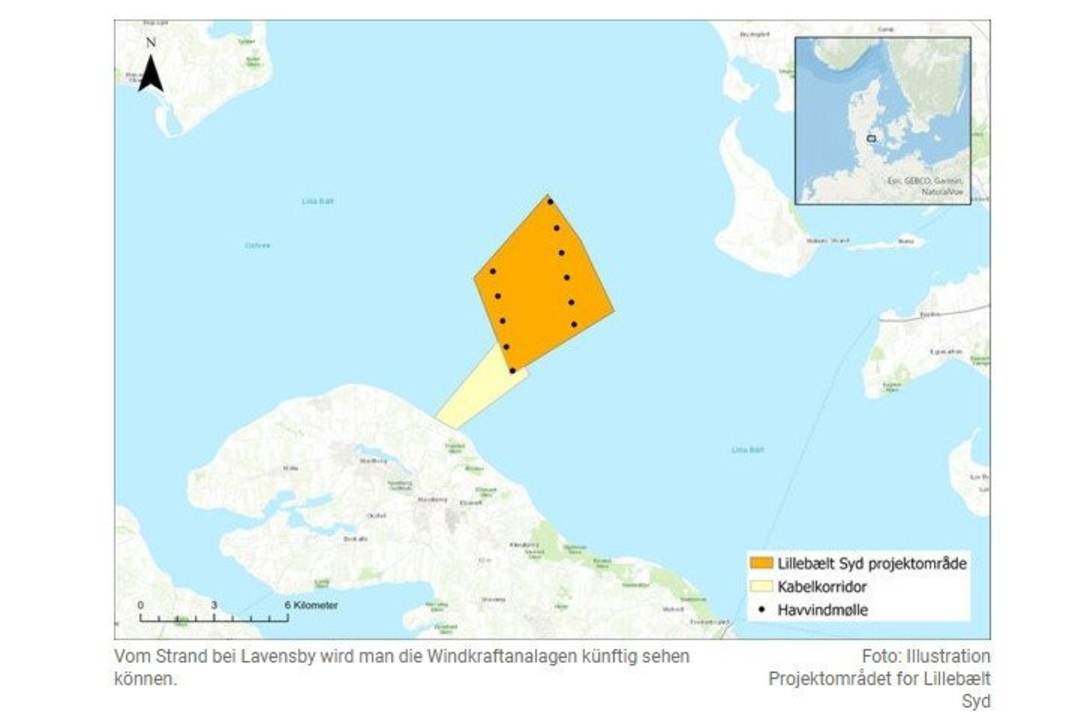


According to the plans, the offshore wind farm is to be built exactly between the Danish peninsula of Helnæs and the northern tip of Alsen on an area of 22 square kilometres, which corresponds to around 3,100 football pitches. The southern tip of the park will be around three kilometres from the northern coast of Als.
So anyone travelling through the Little Belt in the future will not be able to avoid Lillebelt Syd. The turbines are to reach a height of 256 metres. By comparison, the piers of the Öresund Bridge, which connects Denmark and Sweden, are only 206 metres high. From land and sea, they will be clearly visible from a distance. The wind farm will be able to generate around 165 megawatts of green electricity, which is equivalent to the consumption of around 148,000 households.
The wind farm is to be built here:



Many marine protection requirements
The wind farm is operated by the regional utility company Sonfor from Sønderborg and the Danish company European Energy A/S, which specialises in renewable energies. According to the operators, the project should help the southern Danish municipality to become CO2-neutral by 2029.
The building permit for the operating companies also includes several conditions relating to marine conservation, as the area is considered particularly important for harbour porpoises. In order to minimise negative impacts, the foundations may only be built from August to October. This is because the number of harbour porpoises in the area is at its lowest during this period.
In addition, the turbines must turn slowly or stand still if the wind falls below 6 m/s between April and October. The operator must also launch programmes as part of the permit to learn more about the impact of offshore wind turbines on the environment.
Eleven more offshore wind farms in planning
In addition to the wind farm in the Little Belt, the Danish Energy Agency is planning eleven other projects. These include a farm in Jammerland Bay in the north-east of the Great Belt, three farms in the Kattegat south of Anholt and several along the North Sea coast.
Another major project is planned off the coast of the island of Bornholm. An offshore wind farm with a capacity of 3 gigawatts is to be built there by 2030. According to the energy authority, this project is one of the largest and most important infrastructure projects in the country.
Read more:
The plans for the eleven wind farms are at different stages. Some have been decided by political agreement or have been granted provisional authorisation for investigation. This means that some are still undergoing environmental impact assessments, while others already have planning permission. Other projects are still in the tendering process.
